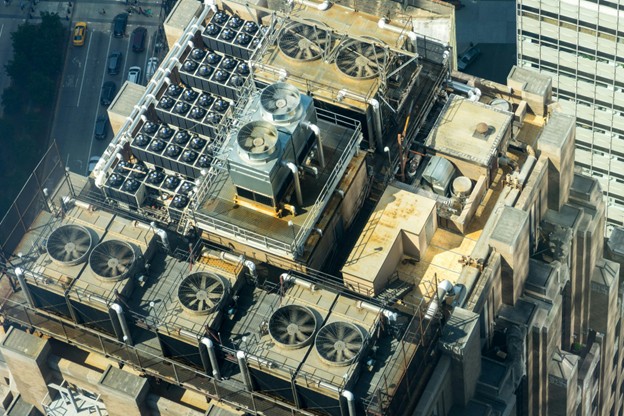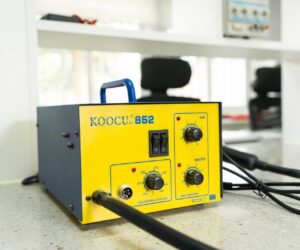Introduction
When you own or manage a commercial property in Denver, the roof above your business is more than just a covering—it’s your first line of defense against Colorado’s unpredictable weather. From heavy snow to sudden hailstorms, the wear and tear on a roof can go unnoticed until it becomes a costly emergency. Over the years, I’ve seen too many business owners delay needed maintenance, only to face interior damage, equipment losses, and even temporary shutdowns.
The good news is that your roof gives you warning signs. Recognizing them early can save thousands of dollars and prevent major disruptions. Below, I’ll walk you through ten clear signs that you may need commercial roof repair services sooner rather than later.
1. Persistent Roof Leaks
Water infiltration is one of the most obvious red flags. If you’ve noticed brown ceiling stains, wet insulation, or dripping after a storm, your roof is trying to tell you something. Even small leaks can spread quickly, damaging walls, flooring, and expensive equipment. A professional roof inspection for commercial buildings can identify whether the leak is caused by failed flashing, punctured membranes, or drainage issues.
SPONSOR AD
If left unchecked, leaks rarely stay small—they often point to deeper structural problems that worsen with every storm.
2. Ponding Water on Flat Roofs
Flat or low-slope roofs are common in commercial buildings across Denver. One of the biggest risks with these systems is ponding water—when rain or melting snow lingers for more than 48 hours. Standing water accelerates membrane breakdown and can lead to sagging sections over time.
This is why many business owners rely on experienced commercial roofing contractors. They understand drainage design and can recommend solutions before ponding water turns into leaks or structural failures.
3. Visible Cracks, Blisters, or Bubbles
Roof membranes expand and contract with temperature swings. Over the years, this movement can create cracks, blisters, or bubbles. These weak spots allow moisture to enter, often going unnoticed until interior damage appears. Regular inspections catch these early, and in many cases, repairs can be localized instead of requiring a full replacement.
4. Sagging or Uneven Roof Sections
A roof should look flat and uniform. If you notice sagging or dips, it’s a sign of water damage, structural stress, or compromised insulation. Sagging areas are more likely to collect water, multiplying the problem. This is one of the most urgent situations, as sagging may indicate a risk of partial collapse.
5. Rising Energy Bills
Your roof plays a major role in regulating building temperature. Damaged insulation or worn roofing materials allow heat to escape in winter and cool air to leak in summer. If your utility bills are climbing without explanation, your roof may be to blame.
In some cases, upgrading to energy-efficient systems like spray polyurethane foam roofing can reduce energy costs while sealing existing vulnerabilities.
6. Storm Damage
Denver is no stranger to hail, heavy winds, and snowstorms. After severe weather, it’s crucial to check for signs of impact damage—dents, torn membranes, or displaced flashing. While storm damage might not always be visible from the ground, it can quickly escalate. Calling for storm damage roof repair immediately after a major event often prevents long-term problems.
7. Interior Mold or Musty Odors
Moisture trapped within your roofing system creates the perfect environment for mold. If employees or tenants notice musty smells, it may be a result of water intrusion through the roof. Beyond the health risks, mold remediation can become expensive. Prompt roof leak repair for businesses is far more cost-effective.
8. Damaged Flashing or Edge Details
Flashing is the thin metal material used around roof edges, vents, and penetrations to keep water out. When flashing is corroded, bent, or missing, water can infiltrate easily. Damaged flashing is a common source of leaks and should be repaired quickly to avoid spreading water damage.
9. Clogged or Failing Drainage Systems
Commercial roofs rely heavily on drains, gutters, and downspouts to channel water away. If these systems are clogged or broken, water will pool on the surface. Routine preventative roof maintenance keeps these systems clear and working properly. Ignoring drainage issues is one of the fastest ways to shorten the life of a roof.
10. Age of the Roof
Finally, don’t underestimate the role of age. Most commercial roofing systems last between 20 and 30 years with proper industrial roof maintenance. If your roof is reaching the end of its expected lifespan, it’s wise to schedule a professional inspection. Even if it looks fine from the ground, hidden weaknesses may be developing.
Why Early Repairs Save Money
As someone who has worked on hundreds of roofing projects across Colorado, I can tell you this: waiting too long nearly always costs more. A leak that costs a few hundred dollars to fix today might lead to thousands in structural repairs, mold remediation, or equipment replacement later. Early action also minimizes downtime, keeping your business running smoothly.
FAQs
- How often should I schedule a roof inspection for a commercial building?
At least twice a year—typically in spring and fall. Additional inspections should follow major storms. Regular inspections catch small issues before they become costly. - Can flat roof repair extend the life of my roof, or will I eventually need a full replacement?
Flat roof repair can often add years to your system’s lifespan, especially when combined with proper maintenance. Full replacement is only necessary when damage is widespread or the roof has reached the end of its service life. - What should I do if I notice sudden leaks inside my building?
Call for emergency roof repair services immediately. Cover sensitive equipment if possible and document the damage for insurance purposes. Quick action reduces both repair costs and business disruption.
Conclusion
Your commercial roof is one of the most important investments protecting your business. By paying attention to the early warning signs, such as leaks, ponding water, cracks, sagging, and storm damage, you can avoid costly emergencies. Whether it’s routine commercial roof restoration or immediate repairs, acting quickly is always the smarter choice.
If you’re unsure about your roof’s condition, schedule a professional inspection today. A proactive approach now can save you stress, money, and downtime tomorrow.








